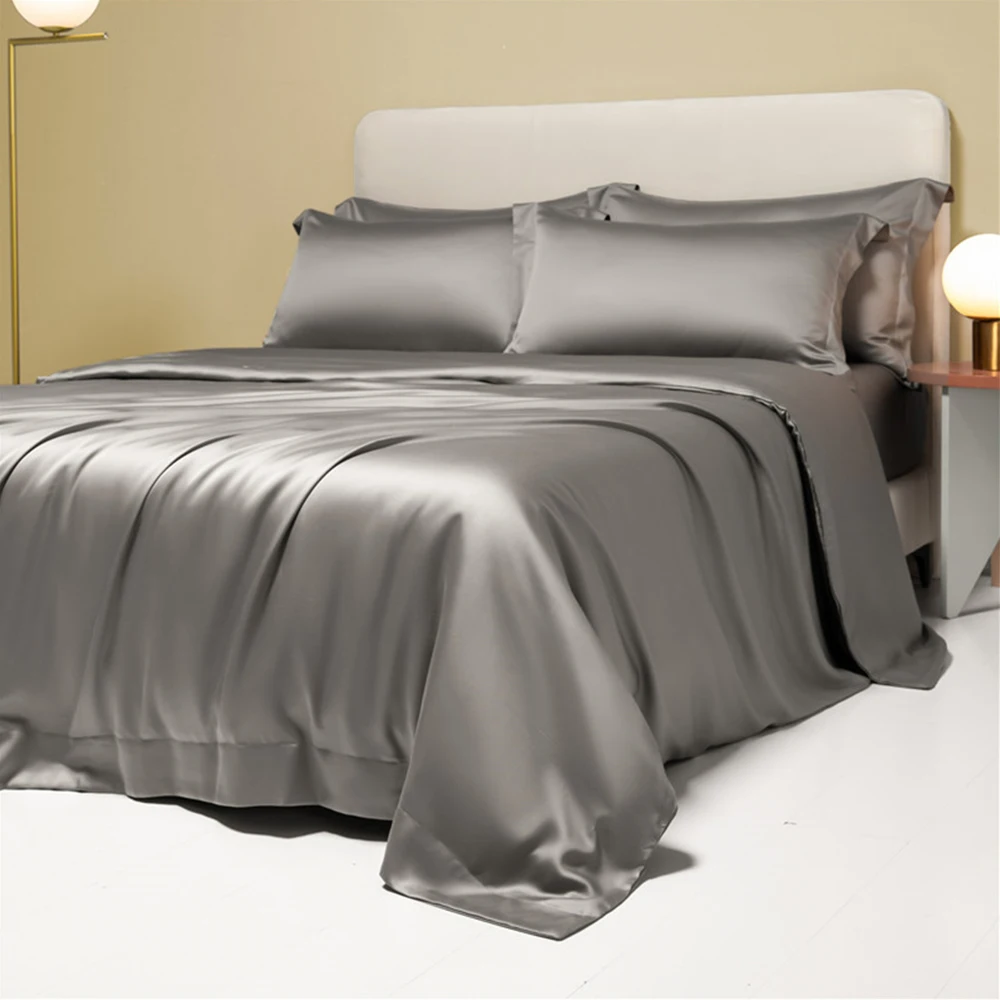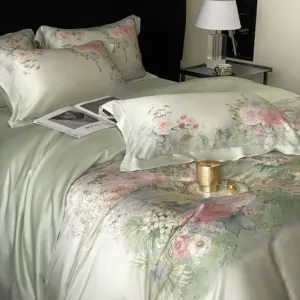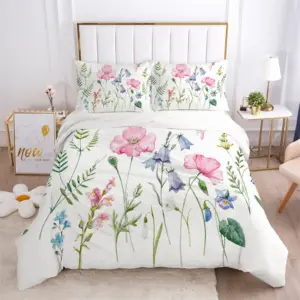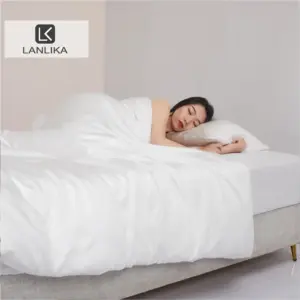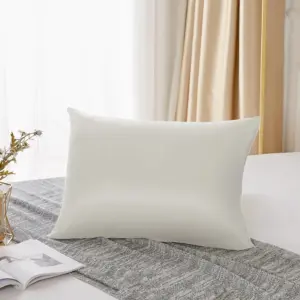Are you constantly waking up with itchy eyes, a stuffy nose, or sneezing fits? Your bedding might be the culprit. Many people don’t realize that their bed can harbor millions of microscopic allergens that trigger symptoms and disrupt sleep. Finding the right hypoallergenic bedding can dramatically improve your sleep quality and overall health.
Understanding Allergens in Your Bedding and Their Impact on Sleep
Your bed is unfortunately an ideal environment for common allergens. Every night, we shed skin cells, sweat, and bring in outside particles that create the perfect breeding ground for:
- Dust mites: Microscopic creatures that feed on dead skin cells
- Pet dander: Tiny particles of skin shed by cats, dogs, and other animals
- Mold and mildew: Thrive in damp environments, including bedding
- Pollen: Outdoor allergens that attach to hair and clothing
The average mattress can contain between 100,000 to 10 million dust mites, making your bed one of the most allergen-dense areas in your home. When you’re exposed to these allergens for 7-8 hours each night, your body’s immune system stays activated, preventing proper rest.
Common allergy symptoms that disrupt sleep include:
– Nasal congestion and difficulty breathing
– Persistent coughing or throat clearing
– Itchy, watery eyes
– Skin irritation or hives
– Sneezing and runny nose
– Worsened asthma symptoms
Research has established a clear connection between allergen exposure during sleep and symptom severity. Studies show that people with allergies lose an average of one hour of sleep per night during peak allergy seasons. This sleep deficit compounds over time, leading to daytime fatigue, reduced productivity, and even compromised immune function.
Understanding the hypoallergenic properties of silk fabric can help you make informed decisions about creating a healthier sleep environment.
Essential Components of Allergy-Resistant Bedding: A Complete System
Creating an effective allergen barrier requires a systematic approach. Addressing just one element of your bedding won’t provide adequate protection since allergens can penetrate through any weak point in your defenses.
A complete allergen barrier system includes multiple layers working together:
- Mattress encasement or protector (foundation layer)
- Hypoallergenic pillows with protective covers
- Allergen-resistant sheets and pillowcases
- Hypoallergenic comforter or duvet with protective cover
Each component serves a specific purpose in your defense strategy. Medical research shows that implementing a complete allergen barrier system can reduce allergen exposure by up to 90%, while using only one component typically reduces exposure by just 30-40%.
When investing in allergy-proof bedding, prioritize in this order:
1. Mattress protection (where the largest allergen colonies reside)
2. Pillow protection (closest to your airways)
3. Sheets and pillowcases (direct skin contact)
4. Comforters and duvets (typically harbor fewer allergens but still important)
For those with severe allergies, silk bedding for allergy sufferers provides comprehensive protection against multiple allergen types while offering luxurious comfort.
Mattress Protection: Your Foundation for Allergen Defense
Your mattress is ground zero for allergen accumulation. Without proper protection, even a new mattress can become contaminated with dust mites within just three months. Effective mattress protection forms the foundation of your allergen defense system.
There are two main approaches to mattress protection:
Full Encasements completely surround your mattress, sealing it on all six sides with a zippered closure. These provide the most comprehensive protection, especially if you have an older mattress already containing allergens.
Mattress Protectors cover just the top and sides of your mattress, offering good protection against new allergens while being easier to remove for washing.
Critical features to look for in mattress protection:
- Pore size under 10 microns (to block dust mites and their waste)
- Waterproof barrier (prevents liquid penetration while remaining breathable)
- Noise-free material (to avoid disrupting sleep)
- Secure closure system (no gaps for allergens to enter)
- Proper fit for your mattress depth
| Protector Type | Complete Allergen Protection | Waterproof | Breathability | Best For |
|---|---|---|---|---|
| Full Encasement | Excellent | Varies | Moderate | Maximum protection, existing allergens |
| Waterproof Protector | Good (top only) | Excellent | Good | Liquid protection, some allergen barrier |
| Cotton Protector | Fair | Poor | Excellent | Comfort, minimal protection |
Studies have found that properly encased mattresses show a 98% reduction in dust mite allergens compared to unprotected mattresses. This significant reduction forms the cornerstone of your allergy relief strategy.
Understanding what makes silk hypoallergenic can help you select the most effective mattress protection materials for your specific needs.
Pillow Solutions: Choosing Hypoallergenic Materials and Proper Encasements
Pillows deserve special attention in your allergy-fighting strategy because they sit closest to your face and airways. The average pillow can double in weight over two years from accumulated allergens if not properly protected.
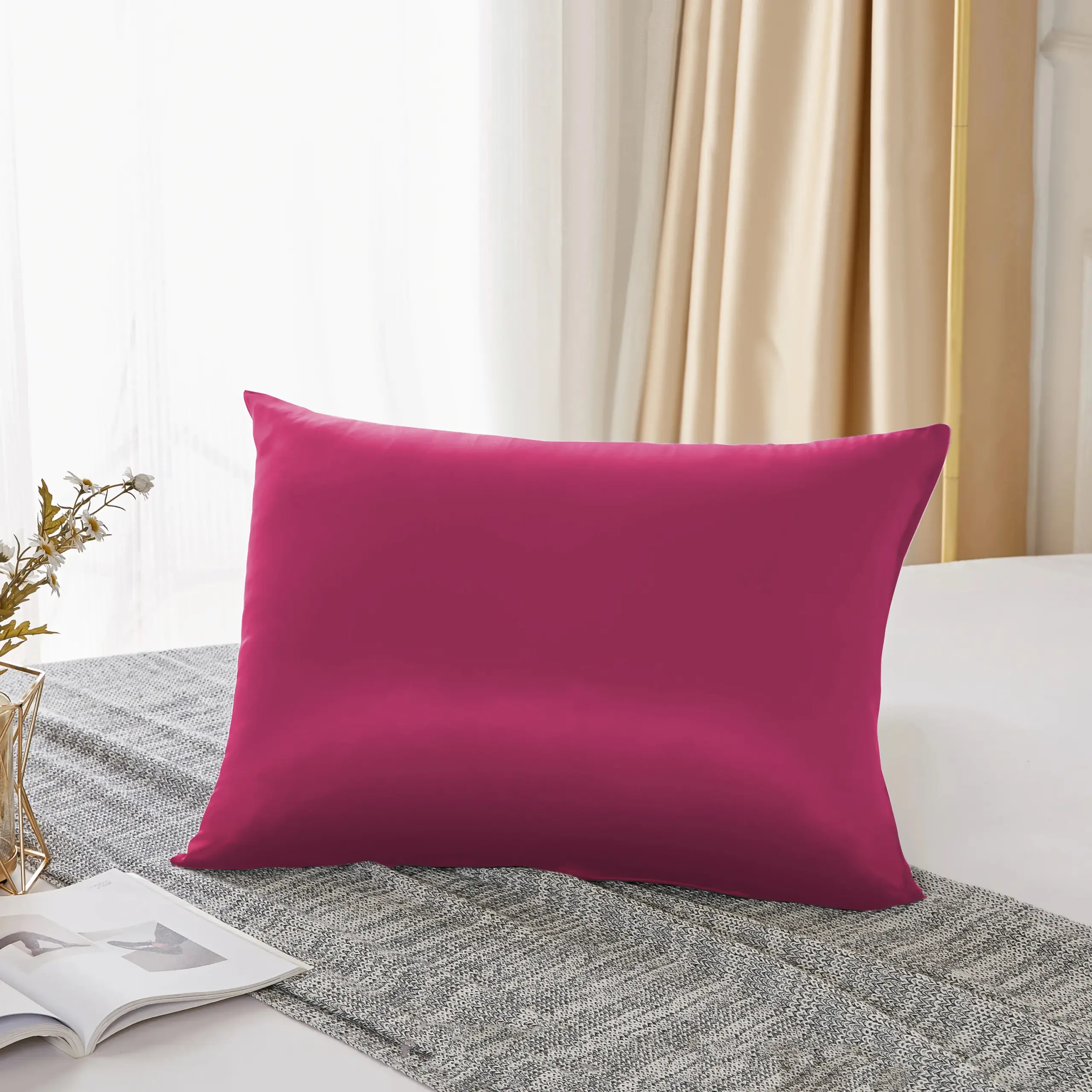
Hypoallergenic Pillow Materials:
– Natural Latex
* Pros: Naturally dust mite resistant, durable, supportive, breathable
* Cons: Expensive, heavy, potential latex allergies for some users
- Memory Foam
- Pros: Dense structure inhibits dust mites, supportive, durable
Cons: Can trap heat, potential off-gassing, not washable
Mulberry Silk Fill
- Pros: Naturally hypoallergenic, moisture-wicking, temperature regulating, luxurious feel
Cons: Higher price point, requires gentle care, may need fluffing
Down Alternative
- Pros: Washable, affordable, mimics down feel without allergens
- Cons: Less durable, may clump after washing, variable quality
For maximum protection, every pillow should have two layers of defense:
- An allergen-proof pillow encasement that completely seals the pillow
- A washable pillowcase that can be cleaned frequently
Your sleeping position affects your pillow needs as well. Side sleepers typically need firmer, higher pillows that can compress without collapsing completely. Back and stomach sleepers generally need softer, flatter pillows that maintain proper neck alignment.
For washing, most allergen experts recommend cleaning pillowcases weekly and pillow protectors monthly. The pillows themselves should be washable or replaceable every 1-2 years, as even protected pillows gradually accumulate allergens through microscopic penetration.
Explore our collection of mulberry silk pillowcases to find options specifically designed for allergy relief that combine protection with luxurious comfort.
Premium Sheet Materials for Allergy Sufferers
Sheets come in direct contact with your skin throughout the night, making their material composition crucial for allergy sufferers. The ideal sheets provide a barrier against allergens while remaining breathable and comfortable.
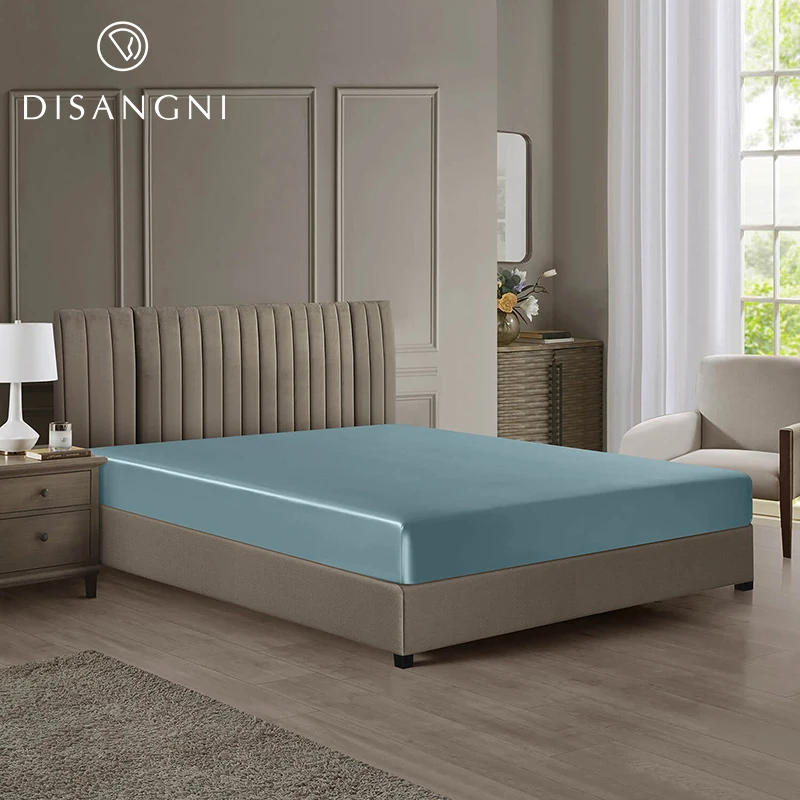
When selecting sheets for allergy protection, fabric weave and fiber type are more important than thread count. While many manufacturers promote high thread counts, a moderately high thread count (300-600) with the right fiber composition provides better allergen protection than extremely high thread count sheets made from allergenic materials.
Table: Hypoallergenic Sheet Material Comparison
| Material | Allergen Resistance | Breathability | Durability | Maintenance | Price Range |
|---|---|---|---|---|---|
| Mulberry Silk | Excellent | Excellent | Good | Requires gentle care | $$$$ |
| Organic Cotton | Very Good | Excellent | Excellent | Easy to maintain | $$ |
| TENCEL™ Lyocell | Excellent | Excellent | Good | Easy to maintain | $$$ |
| Bamboo Rayon | Very Good | Excellent | Good | Moderate care | $$ |
| Microfiber | Good | Fair | Fair | Easy to maintain | $ |
For optimal allergen protection, sheets should be washed weekly in hot water (at least 130°F/54°C) to kill dust mites. However, premium materials like silk require special washing considerations to maintain their protective properties.
The science behind silk’s hypoallergenic properties reveals why it’s particularly effective for allergy sufferers. Its natural protein structure and tight weave prevent dust mites from penetrating while remaining breathable and moisture-wicking.
Our collection of mulberry silk sheets provides superior allergen protection with the added benefits of temperature regulation and skin-friendly smoothness that reduces friction-based irritation.
Silk: The Ultimate Hypoallergenic Luxury Bedding Option
Among all hypoallergenic bedding materials, silk stands out as the premium choice for allergy sufferers seeking both relief and luxury. Silk’s unique natural properties make it exceptionally effective at combating multiple allergen types.
The secret to silk’s allergen-fighting power lies in its protein structure. Silk contains a natural protein called sericin that has antimicrobial properties, inhibiting the growth of bacteria, fungi, and dust mites. Studies have found that dust mites struggle to establish colonies in silk bedding because the smooth fibers provide less surface area for attachment and less food (skin cell) accumulation.
When selecting silk bedding, quality matters significantly. The momme weight (similar to thread count) indicates silk’s density and durability. For bedding applications, 19-25 momme provides the optimal balance between protective barrier properties and luxurious drape.
Benefits of Mulberry Silk for Allergy Sufferers:
– Natural resistance to dust mites, mold, and mildew
– Temperature regulating properties prevent overheating and sweating
– Smooth surface reduces friction and irritation for sensitive skin
– Hypoallergenic properties help prevent night-time allergic reactions
– Naturally moisture-wicking to keep sleep environment dry
– Protein structure resists bacterial growth and accumulation of allergens
Beyond allergy protection, silk provides additional benefits that improve sleep quality. Its natural temperature regulation helps prevent the night sweats that can exacerbate allergies, while its smooth texture reduces friction that can irritate sensitive skin.
Our luxury silk bedding sets combine these protective qualities with exceptional comfort to create the ultimate sleep environment for allergy sufferers.
The silk bedding temperature regulation properties help maintain optimal sleeping conditions year-round, which is particularly beneficial for allergy sufferers who may be sensitive to temperature fluctuations.
Duvet and Comforter Considerations for Allergen Protection
Duvets and comforters can be significant sources of allergen accumulation if not properly selected and maintained. These bed toppers trap body heat, creating warm, humid environments that dust mites love.
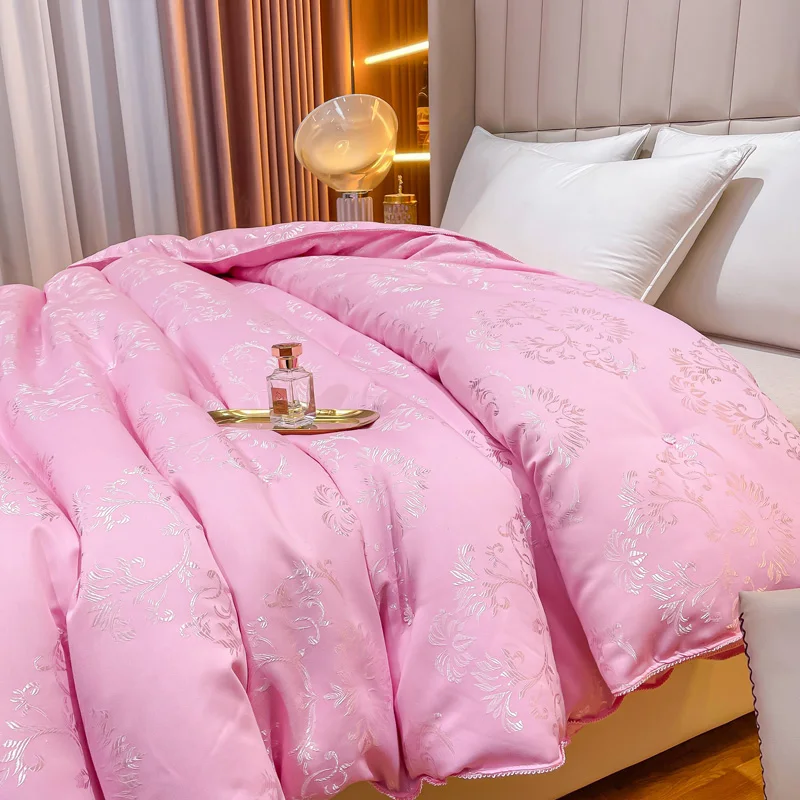
Hypoallergenic Duvet Fillings:
1. Silk Fill
– Naturally resistant to dust mites and mold
– Lightweight and temperature regulating
– Excellent moisture control properties
– Premium price point but exceptional durability
Wool Fill
– Natural dust mite resistance
– Excellent temperature regulation
– Self-cleaning properties when aired properly
– Heavier weight but good for year-round useDown Alternative
– Fully washable at high temperatures
– Good for severe allergy sufferers
– Various weights and warmth options
– More affordable option with good durabilityEucalyptus/TENCEL™ Fill
– Moisture-wicking properties prevent mold
– Naturally inhibits bacterial growth
– Sustainable and eco-friendly option
– Moderately priced with good durability
For maximum protection, use a quality duvet cover that creates an additional barrier between you and potential allergens. These covers should be washed regularly, ideally every 1-2 weeks.
Construction details matter significantly for duvet allergen protection. Look for baffle box construction that keeps filling evenly distributed while preventing cold spots and allergen accumulation points. Corner ties and duvet clips help keep the duvet properly positioned within its cover for consistent protection.
Seasonal considerations are also important. Many allergy sufferers benefit from having two different weight duvets—a lightweight option for warmer months and a heavier option for cooler seasons. This approach prevents overheating, which can increase sweat production and create more favorable conditions for dust mites.
100% Silk Sheets, Green Silk Sheets, King Size Silk Bedding Set, Mulberry Silk Bedding Sets, Queen Size Silk Bedding Set
Price range: $1,246.21 through $1,615.22 Select options This product has multiple variants. The options may be chosen on the product pageEucalyptus Silk Bedding Sets, Eucalyptus Silk Sheets
Price range: $360.24 through $393.60 Select options This product has multiple variants. The options may be chosen on the product pageFull Silk Bedding Set, King Size Silk Bedding Set
Price range: $120.99 through $190.49 Select options This product has multiple variants. The options may be chosen on the product pageGrey Silk Sheets, Silk Sheet and Pillowcase Set
Price range: $88.20 through $146.64 Select options This product has multiple variants. The options may be chosen on the product page100% Silk Sheets, King Size Silk Bedding Set, Mulberry Silk Bedding Sets, Queen Size Silk Bedding Set, White Silk Sheets
Price range: $1,000.79 through $1,351.42 Select options This product has multiple variants. The options may be chosen on the product pageKing Size Silk Pillowcases, Mulberry Silk Pillowcases, Queen Size Silk Pillowcases
Price range: $94.96 through $121.56 Select options This product has multiple variants. The options may be chosen on the product page
For those seeking alternatives to traditional materials, our eucalyptus silk bedding sets provide excellent allergen protection with sustainable materials that suit various preferences and needs.
Key Features to Look for in All Hypoallergenic Bedding
When evaluating any hypoallergenic bedding product, certain universal features separate truly effective allergen barriers from marketing hype. Understanding these key characteristics helps you make informed purchasing decisions.
Essential Features Checklist:
– [ ] Tight weave or proven barrier technology (under 10 microns)
– [ ] Certified hypoallergenic materials (OEKO-TEX, asthma & allergy friendly™)
– [ ] Machine washable at high temperatures (130°F/54°C)
– [ ] Moisture-wicking properties to prevent mold growth
– [ ] Zippered enclosures with micro-zipper technology
– [ ] Breathable materials to prevent overheating
– [ ] Durable construction that maintains integrity after washing
– [ ] Free from harsh chemicals and irritating treatments
– [ ] Appropriate for your specific allergen concerns
Certifications provide valuable third-party verification of hypoallergenic claims. The most respected include:
- OEKO-TEX Standard 100: Certifies textiles are free from harmful chemicals
- asthma & allergy friendly™: Products tested specifically for allergen barrier effectiveness
- Global Organic Textile Standard (GOTS): Ensures organic materials meet environmental and social standards
Construction quality significantly impacts allergen protection. Reinforced seams prevent microscopic allergen penetration, while quality closures (like micro-zippers with covers) ensure complete enclosure. For bedding that requires washing, reinforced corners and edges help maintain barrier integrity through multiple cleaning cycles.
Understanding natural hypoallergenic fabrics helps you distinguish between materials with inherent allergen-resistant properties versus those that require chemical treatments to achieve similar effects.
The specific hypoallergenic features of silk sheets demonstrate how premium materials combine multiple protective mechanisms to create superior allergen barriers.
Proper Care and Maintenance of Allergy-Proof Bedding
Even the most effective hypoallergenic bedding requires proper maintenance to continue providing allergen protection. Regular washing removes accumulated allergens before they build to symptomatic levels.
Maintenance Schedule Table:
| Bedding Item | Washing Frequency | Temperature | Special Instructions | Replacement Timeline |
|---|---|---|---|---|
| Sheets & Pillowcases | Weekly | Hot (130°F/54°C) | Use hypoallergenic detergent | Every 1-2 years |
| Pillow Protectors | Monthly | Hot (130°F/54°C) | Ensure complete drying | Every 1-2 years |
| Mattress Protector | Every 2-3 months | According to care label | Inspect for damage | Every 2-3 years |
| Pillows | Every 3-6 months (if washable) | According to care label | Replace if not washable | Every 1-2 years |
| Duvet/Comforter | Every 3-6 months | According to care label | Consider professional cleaning for silk | Every 3-5 years |
For temperature-sensitive materials like silk, follow these special care instructions:
– Use cold water (below 86°F/30°C)
– Select gentle cycle or hand wash
– Use pH-neutral detergent specifically for delicates
– Air dry or use dryer on lowest heat setting
– Store completely dry to prevent mildew
Regular inspection is essential for maintaining protection. Check for signs of wear including thinning fabric, broken zippers, or torn seams that could compromise the allergen barrier. Pay special attention to closure mechanisms on encasements and protectors, as these are common failure points.
For items that cannot be machine washed, consider alternatives like:
– Steam cleaning (heat kills dust mites)
– Freezing (24 hours below 0°F/-18°C kills dust mites)
– Professional cleaning services specializing in allergen removal
– Regular exposure to direct sunlight (natural UV disinfection)
Learning whether silk is good for allergies helps you understand the specific maintenance requirements for these premium materials that maximize their protective benefits.
Creating a Complete Allergen-Resistant Bedroom Environment
Hypoallergenic bedding works best as part of a comprehensive approach to bedroom allergen control. The complete strategy addresses airborne particles, surface accumulation, and environmental factors that influence allergen populations.
Complete Bedroom Allergy Strategy:
1. Air Quality Management
– HEPA air purifier rated for room size
– Humidity monitor and control (30-50% ideal)
– Regular filter replacement schedule
Surface and Storage Considerations
– Hard surface flooring instead of carpet
– Minimal fabric window treatments
– Enclosed storage for extra bedding
– Regular damp dusting of surfacesCleaning Protocol
– HEPA vacuum for any soft surfaces
– Weekly damp cleaning of hard surfaces
– Treatment of any mold-prone areas
– Seasonal deep cleaning schedule
Humidity control is particularly important for dust mite prevention. These microscopic allergen producers thrive in humidity levels above 50% but struggle to reproduce in drier environments. Using a dehumidifier in humid climates or seasons can significantly reduce dust mite populations.
Temperature management also affects allergen levels. Dust mites prefer warmer temperatures (75-80°F/24-27°C), so keeping bedrooms slightly cooler can help suppress their reproduction rates.
When storing seasonal bedding, use airtight containers to prevent allergen contamination during off-seasons. Before reusing stored items, wash them thoroughly to remove any accumulated dust or allergens.
Our silk bedding sets provide a comprehensive solution that addresses multiple aspects of allergen protection while enhancing overall sleep quality.
Frequently Asked Questions About Allergy-Proof Bedding
Q: Do I need to replace all my bedding at once to see benefits?
A: No. Start with mattress and pillow protection as your foundation, then replace sheets and other items as your budget allows. Each component provides incremental benefits.
Q: Will hypoallergenic bedding completely eliminate my allergies?
A: While quality hypoallergenic bedding significantly reduces allergen exposure during sleep, it works best as part of a comprehensive approach including proper cleaning, air filtration, and medical management of allergies.
Q: Is silk bedding worth the higher investment for allergy sufferers?
A: For many allergy sufferers, silk’s natural resistance to dust mites, moisture-wicking properties, and skin-friendly texture make it an excellent investment, particularly for those with sensitive skin or multiple allergies.
Q: How can I tell if my current bedding is contributing to my allergies?
A: Try temporarily replacing your pillow with a hypoallergenic version and using allergen-proof covers. If symptoms improve, your bedding is likely a significant factor in your allergies.
Q: How often should I replace my hypoallergenic bedding?
A: Most hypoallergenic bedding should be replaced every 1-2 years for pillows and pillowcases, 2-3 years for mattress protectors, and 3-5 years for duvets and comforters, depending on use and care.
Q: Can I use my existing bedding with allergen-proof covers?
A: Yes, encasing existing mattresses and pillows in quality allergen-proof covers can significantly reduce exposure to existing allergens, though replacing heavily contaminated items may provide better results for severe allergy sufferers.
The hypoallergenic silk fabric benefits extend beyond just allergen protection to include overall wellness and comfort advantages that make them particularly valuable for sensitive individuals.
The Benefits of Investing in Quality Hypoallergenic Bedding Systems
Investing in a complete hypoallergenic bedding system delivers substantial benefits that extend far beyond basic allergy symptom relief. The comprehensive approach transforms your sleep experience and overall health.
Key Benefits:
– Significant reduction in nighttime allergy symptoms
– Improved sleep quality and duration
– Decreased reliance on allergy medications
– Enhanced skin health for those with sensitivities
– Better respiratory function during sleep and waking hours
– Longer-lasting, more durable bedding that maintains integrity
– Protection of mattress investment from allergens, stains, and wear
– Comprehensive solution that addresses multiple allergen types simultaneously
Research shows that allergy sufferers using complete hypoallergenic bedding systems experience up to 61% reduction in nasal symptoms and 52% reduction in eye symptoms compared to standard bedding. Many users report being able to reduce their dependence on antihistamines and other allergy medications after implementing proper bedding solutions.
While quality hypoallergenic bedding often represents a higher initial investment than standard options, the durability and health benefits provide superior long-term value. Premium materials like Mulberry silk typically last 3-5 times longer than lower-quality alternatives when properly maintained, reducing the lifetime cost of ownership.
Beyond allergy relief, the improved sleep quality delivers cascading benefits throughout daily life: better concentration, enhanced mood stability, stronger immune function, and increased daytime energy levels. These compounding advantages make hypoallergenic bedding one of the most impactful health investments you can make.
Sanctuary Soft’s premium materials provide exceptional natural silk properties for sensitive skin, making them particularly valuable for those with multiple sensitivities or skin conditions in addition to respiratory allergies.
By implementing the strategies and products outlined in this guide, you can transform your bedroom from an allergen hotspot into a true sanctuary for restorative, symptom-free sleep.

